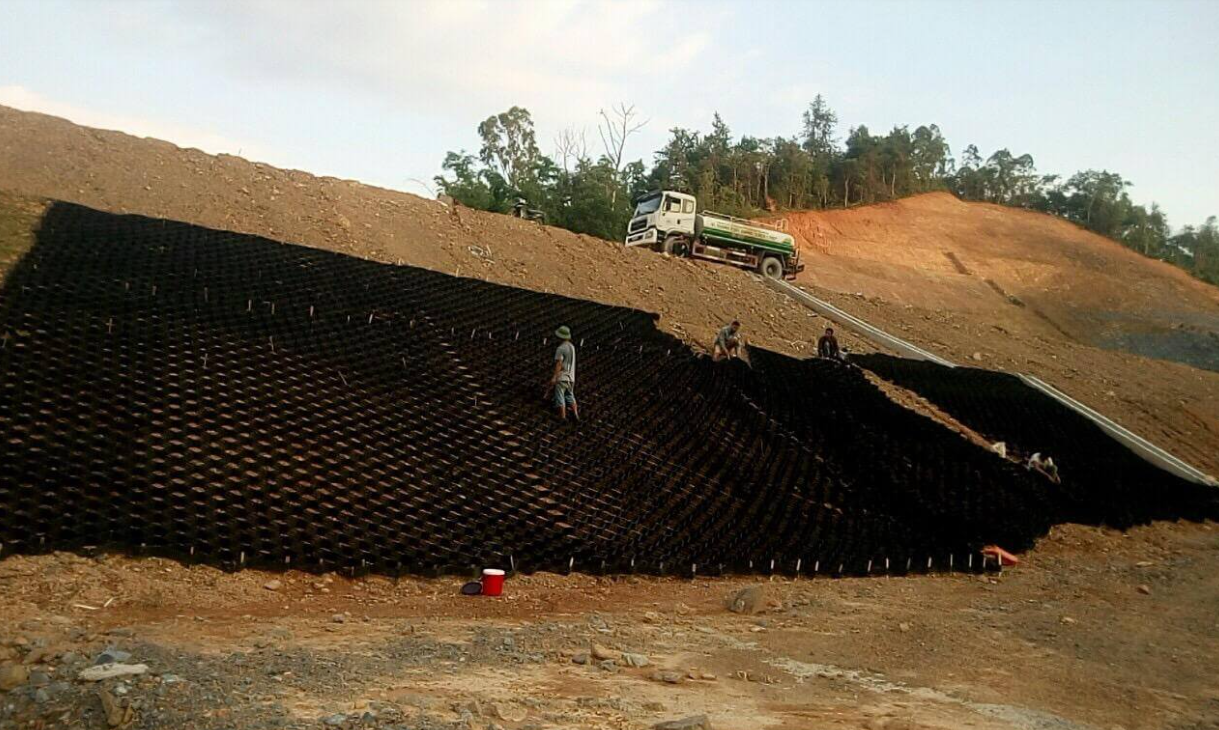- Understanding the Role of Geomembrane Liners in Waste Management
- Innovations in Geomembrane Liners for Water Management
- Geomembrane Liners: A Comprehensive Guide
- The Future of Geomembrane Liners in Civil Engineering
- Geomembrane Liners: Enhancing Landfill Stability
Manager:
WhatsApp:+86 177 0135 2670
Tel:+86 177 0135 2670
Email:marketing@okorder.com
Address:3rd Floor, No.2 Building, No.1 Sanlihe Road
Can you lay gravel grids on soil?
The use of gravel grids, that is geocells or cellular confinement systems, has become increasingly popular in various civil engineering applications including slope protection. But can you lay gravel grids on soil? It is important to address this query as it helps one to know how effective and feasible it is to employ gravel grid especially in the case of slope protections projects. This paper explores various issues concerning geocell slope protection and how laying of the aforementioned items is done.

Understanding Geocell Slope Protection
Geocell slope protection involves applying cellular confinement systems on slopes with an aim of stabilizing them and preventing erosion. These are a type of geosynthetic products made up of cells or chambers that interconnect and which are filled with soil, aggregate or any other infill material. When they are installed on slopes, strong reinforced structures are formed that distribute loads, enhance soil confinement, as well as promote vegetation growth.
The Role of Slope Protection Geocell
Slope protection geocells act as a preventive remedy for different problems associated with unstable slopes and erosion. By confining soil or aggregate within their cellular structure, geocells effectively increase the friction angle and shear strength of the slope surface. Hence, improving stability as well as resistance against erosive forces such as rainfall runoff and wind.
Advantages of Gravel Grids in Slope Protection
Gravel grids have several benefits when used in slope protection:
1. Enhanced Stability: The interconnected cells found within the gravel grids are constitutive reinforcement by distributing applied loads resulting in reduced soil displacement.
2. Erosion Control: Gravel grids restrict particles from being moved away by water or wind hence reducing erosion through holding the infill medium.
3. Vegetation Support: With a conducive environment for root development and moisture retention; gravel grids help plants grow.
4. Cost-Effectiveness: Gravel grids offer a more economical alternative in terms of material costs and installation expenses compared to conventional methods such as retaining walls or riprap.
Challenges of Laying Gravel Grids on Soil
However, there are several problems with laying gravel grids directly on soil:
1. Soil Preparation: Before installing the gravel grids, it is necessary to prepare the soil properly in order to ensure good compaction and load bearing beneath the structures. The effectiveness of slope protection system may be affected by poor soil conditions.
2. Geotechnical Considerations: It is important to evaluate site specific geotechnical factors such as type of soils, gradient of the slopes and groundwater condition for suitability of gravel grid installation.
3. Surface Preparation: Level irregularities and vegetation must be eliminated or mitigated in order to facilitate placement and confinement of these structures uniformly across a slope.
4. Long-Term Performance: Some factors that determine the long term performance of gravel grids include material durability, environmental conditions and maintenance practices. Proper monitoring and maintenance are essential to ensure continued effectiveness.
Best Practices for Laying Gravel Grids on Soil
To maximize the effectivity of gravel grids in slope protection measures, one should consider adopting some best practices like:
1. Site Assessment: A comprehensive site assessment should be carried out so as to evaluate areas such as soil condition, slope stability & erosion potential.
2. Soil Stabilization: If needed stabilize underlying soils through compaction; reinforcement or changing soil properties by addition of suitable materials
3. Surface Preparation: Vegetation clearing debris and other obstructions on slopes facilitates proper placement and confinement within the structures
4. Installation: Appropriate cell expansion followed by proper infill placement and connection methods as per manufacturer instructions should guide gravel grid installation procedures
Vegetation Establishment is about using vegetation in slope protection to improve stability, prevent erosion and make the slope look more attractive.
Monitoring and Maintenance is a section on observing the slope protection system for signs of erosion, settling or vegetative growth; repairs should be done promptly for durability.

Conclusion
In summary, soil can be capped with gravel grids to control erosion and guard slopes. Nevertheless, it is important to take into account specific site conditions, proper installation techniques and long-term maintenance practices. By meeting recommended procedures and dealing with possible drawbacks, gravel grids are a multipurpose and cost-effective way of improving slope stability while preserving the natural environments’ authenticity.






